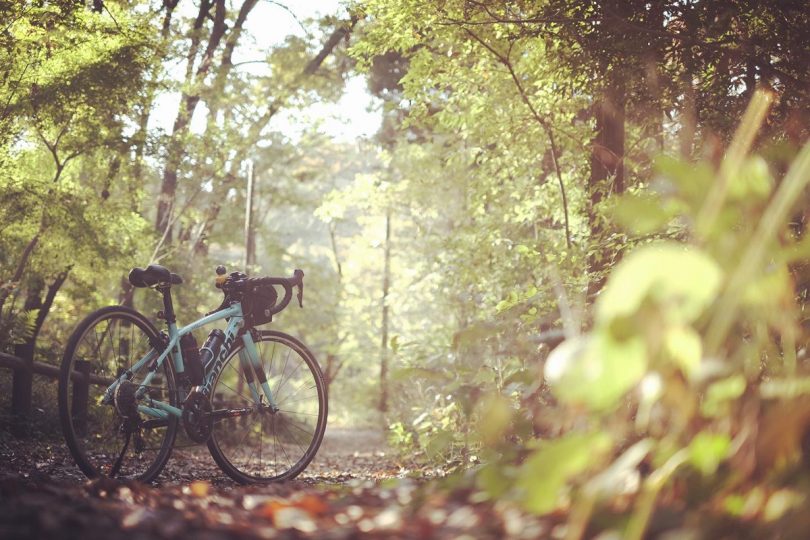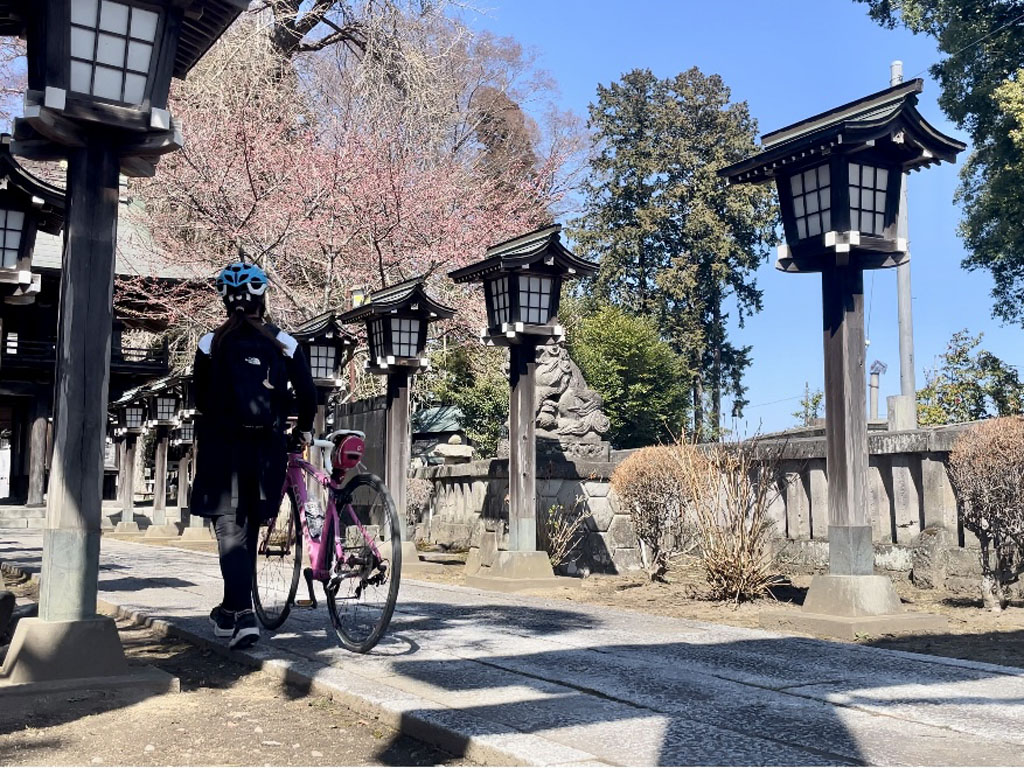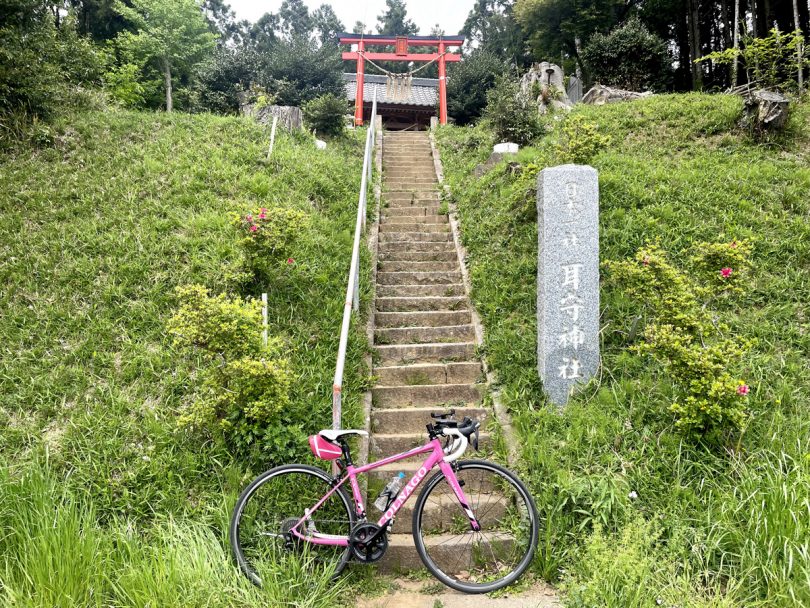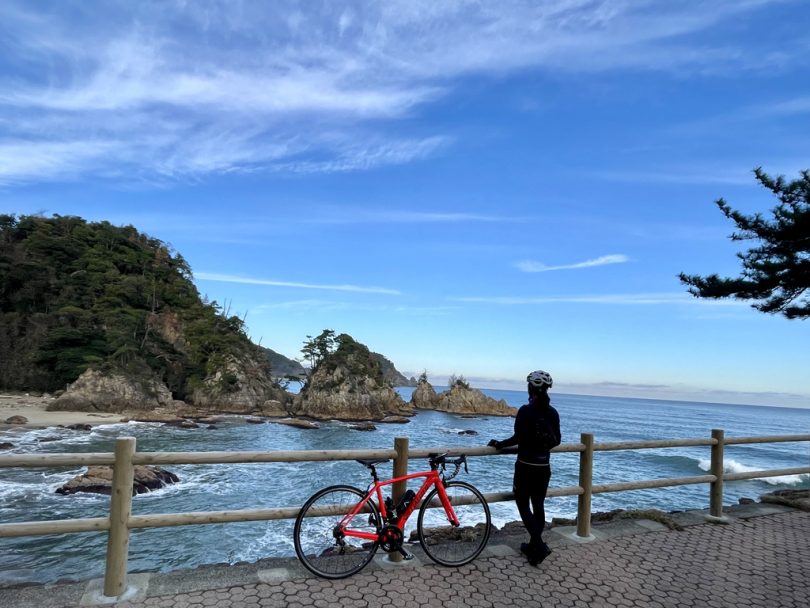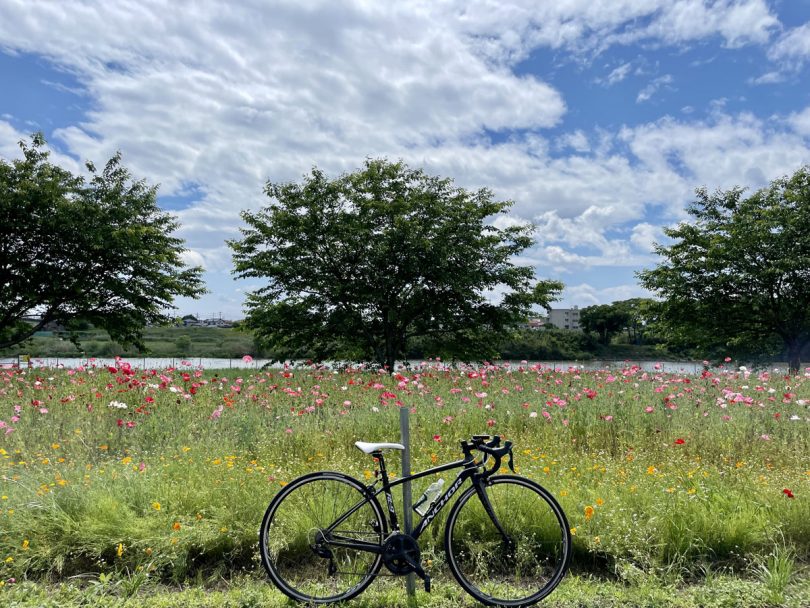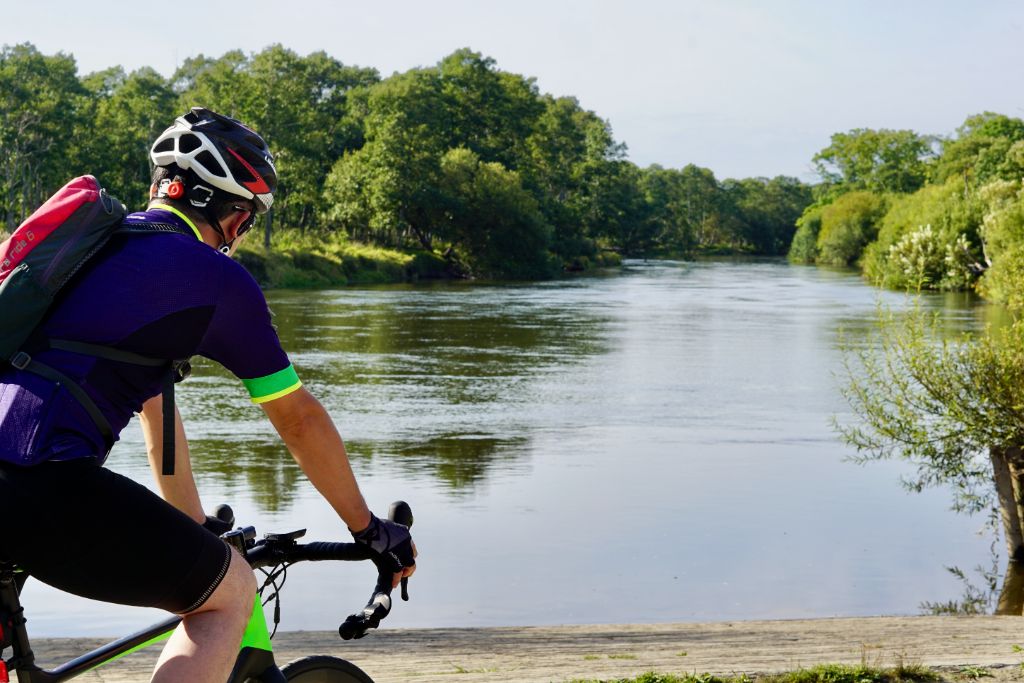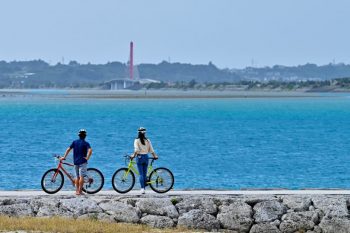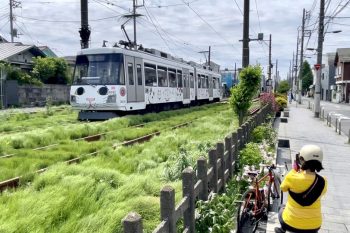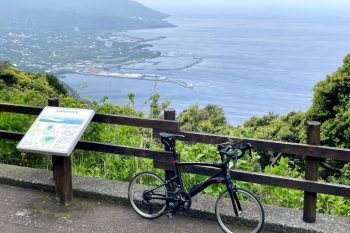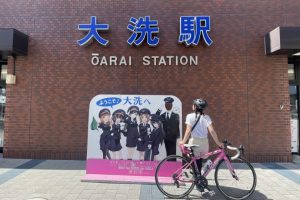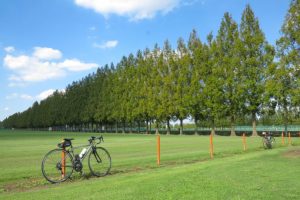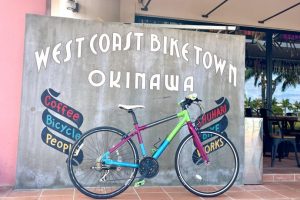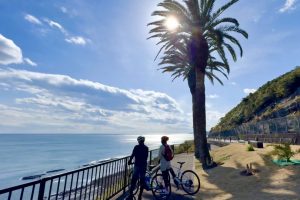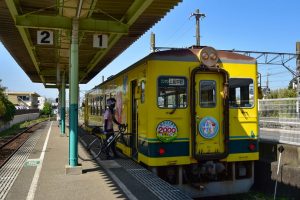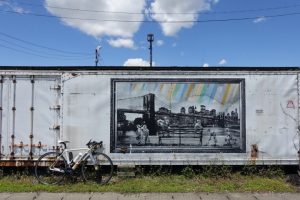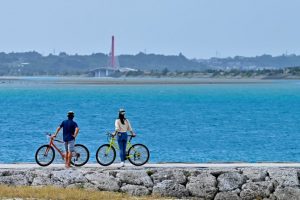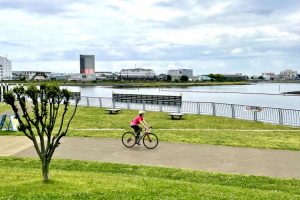This route starts and finishes at Roadside Staion Seseragi-no-Sato Koura. The route runs through the countryside, visits Taga-taisha Shrine, and then follows the river to Hikone Castle. Stroll around the castle town, enjoy eating and drinking, and return to Roadside Station through Takamiya-shuku.
Contents
Starting at Roadside Station Seseragi-no-Sato Koura
We will start from Roadside Station Seseragi-no-Sato Koura along Route 307.
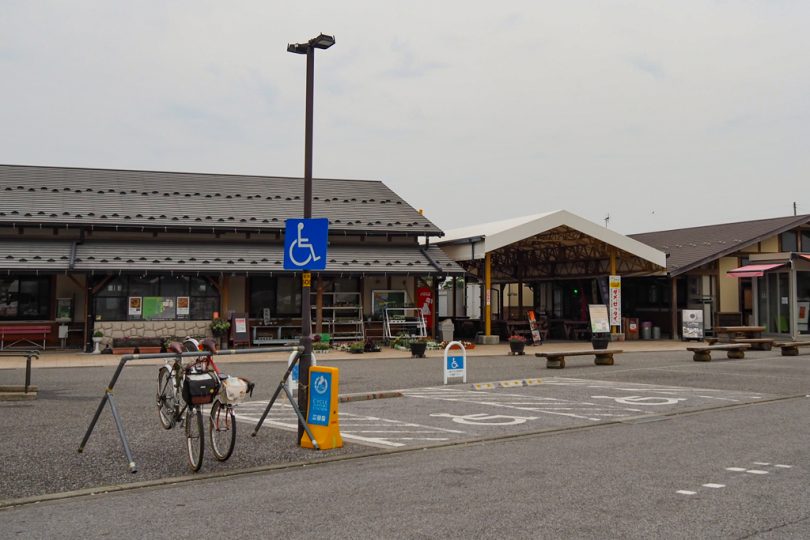
Ride along the busy national highway for a short distance, then turn left before Inukami River and continue along the river. After crossing Inukami Ohashi Bridge, you will see an old sacred tree of Taga-taisha Shrine on your right. There are two sacred trees, one is a female Imorogi tree and the other is a male Imorogi tree.
The two photos below show the female Imorogi tree, which is a little slender.
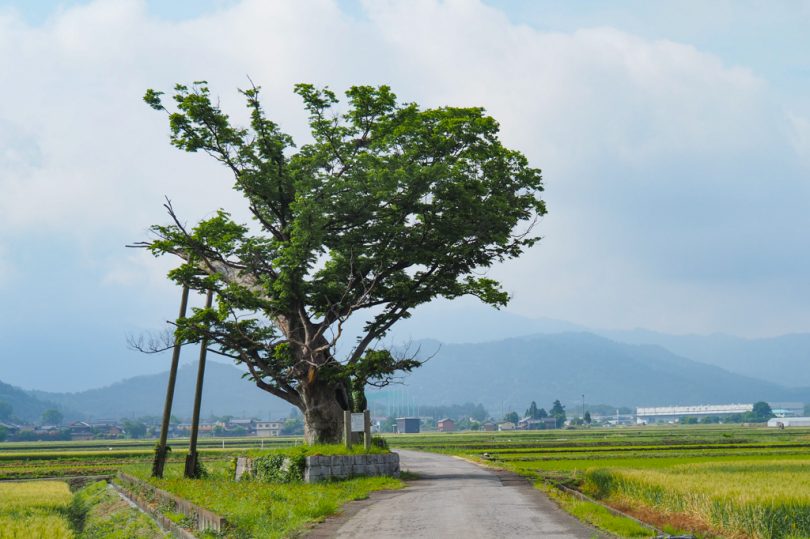
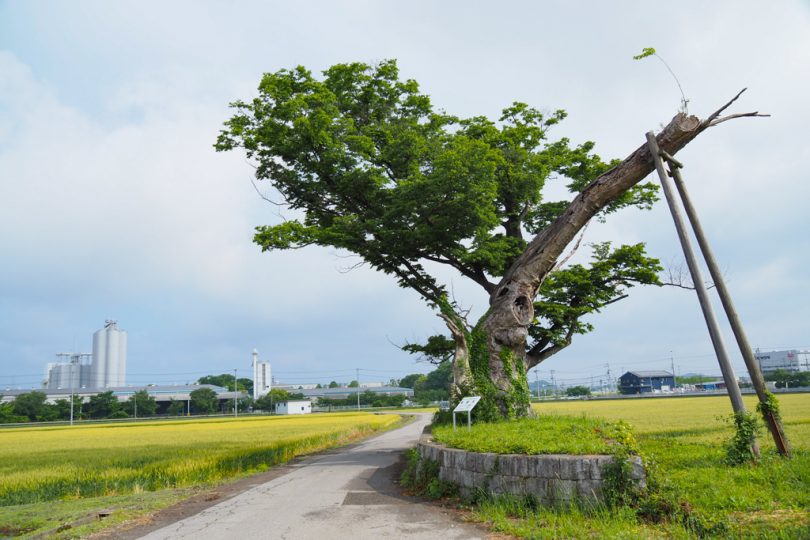
The male Imorogi tree has thick leaves and a stately appearance.
It is said that when a man made a ladle from the zelkova tree and offered a meal to the emperor, his illness was cured. Two such zelkova trees are designated as natural monuments by Shiga Prefecture. You can feel the power from the old trees.
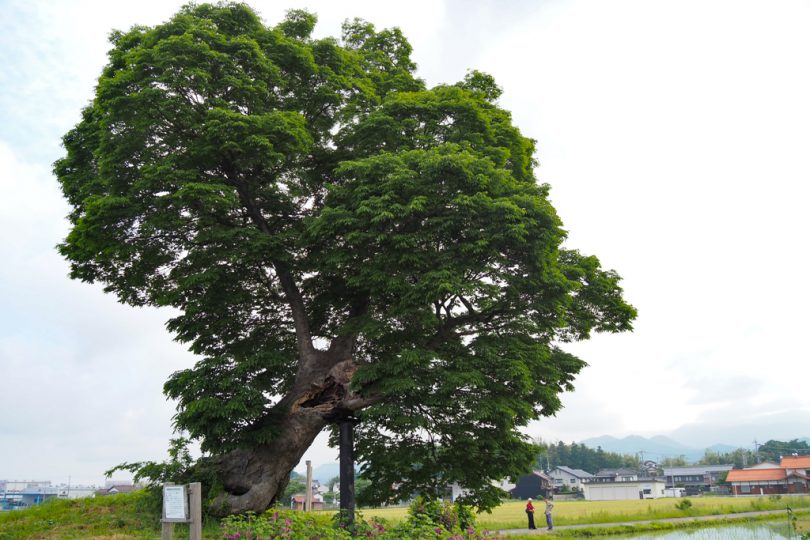
Visit Taga Taisha Shrine
Pass under Meishin Expressway and you will reach Taga Taisha-mae Station. Pass through Showa Ichino Torii gate of Taga Taisha near the station and proceed along the approach lined with souvenir shops.
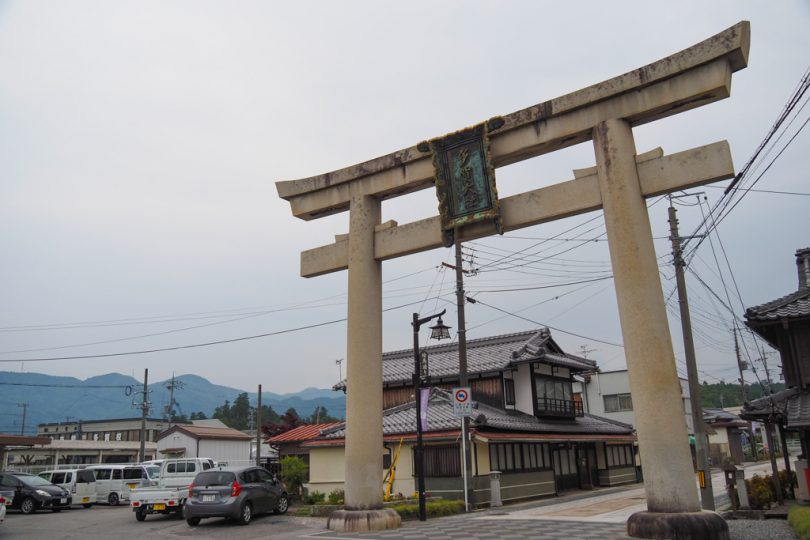
Pass through the magnificent Otorii gate to visit Taga-taisha Shrine.
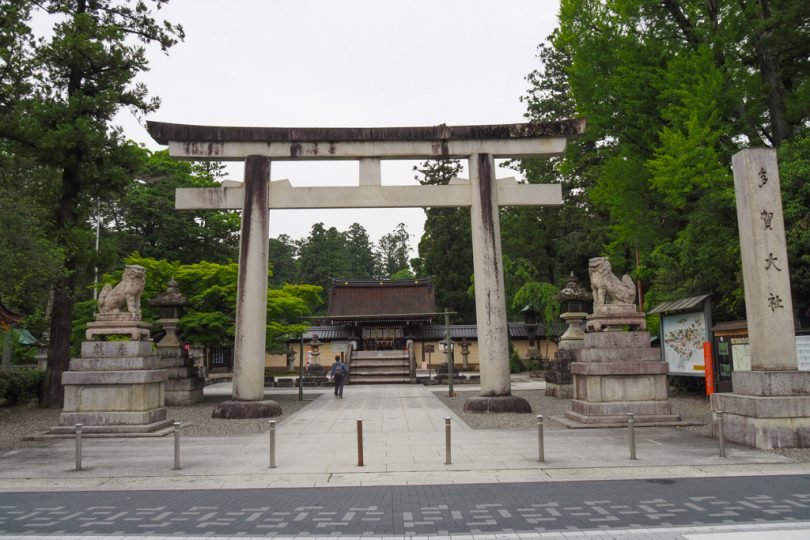
Beyond the torii gate, there is an arched “Sori-bashi” (curved bridge). It is a designated cultural property of the town, but you can actually cross it, but be careful not to wear bicycle shoes as it is dangerous.
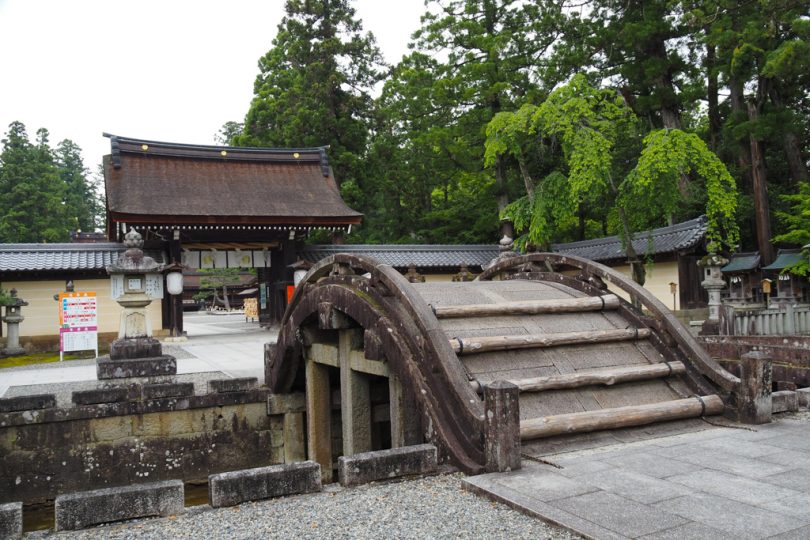
Taga Taisha Shrine, nicknamed “Otaga-san,” is worshipped as a god of longevity, marriage, and protection from bad luck. It is said that Toyotomi Hideyoshi prayed for his sick mother, and many votive offerings remain.
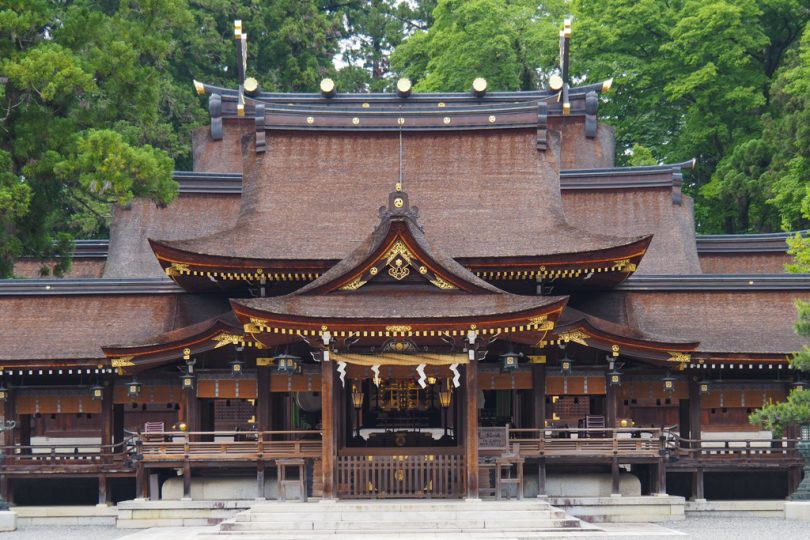
Passing through Goshimon gate, the massive main shrine stands in front, surrounded by trees. The air changes and you feel a sacred atmosphere.
Famous Itokirimochi
There are three stores that sell Itokirimochi, a specialty of Taga Taisha Shrine, so we compared them.
Two stores, “Taga-ya” and “Matusudo Honpo” are lined up right in front of Otorii gate.
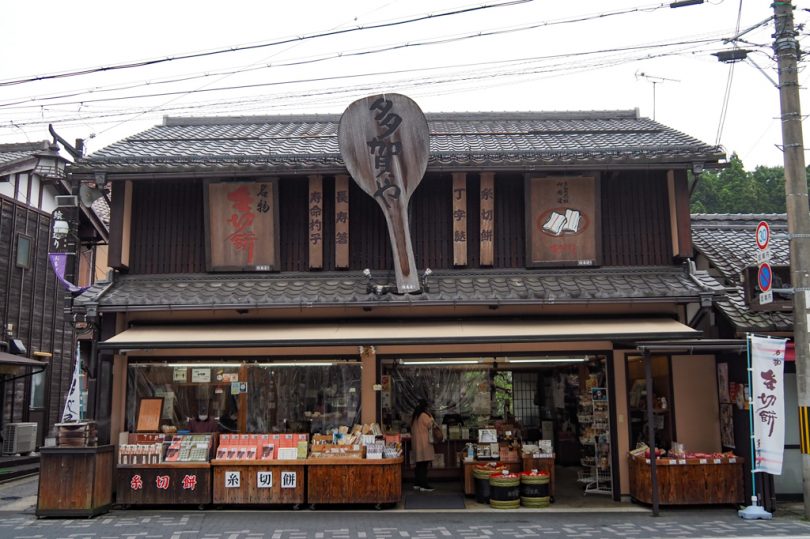
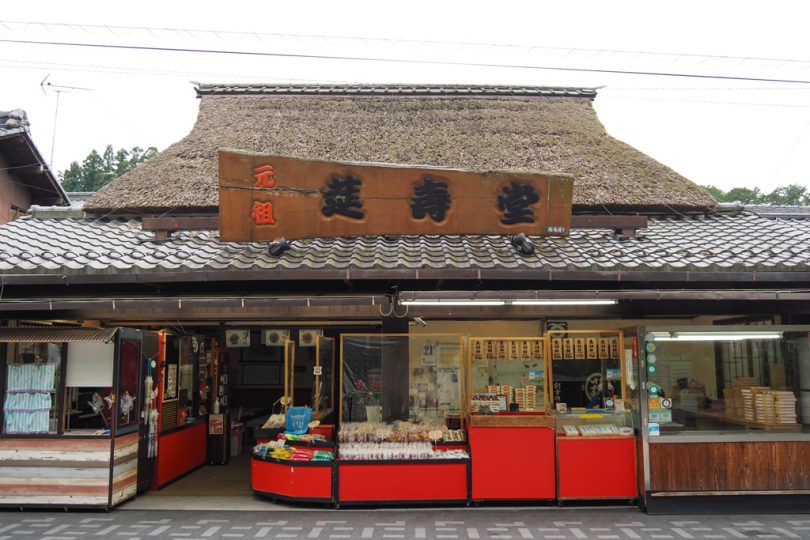
A little further back toward the station is “Hishiya”.
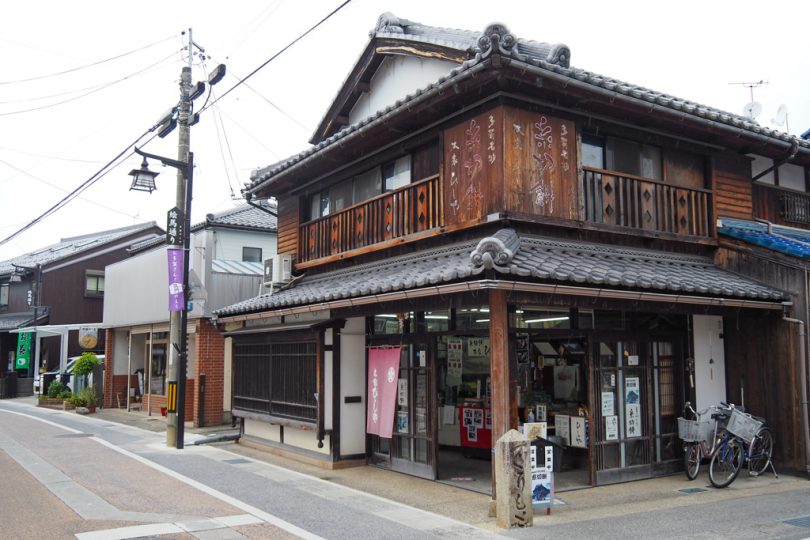
Itokirimochi are white rice cakes with three blue and red lines painted on them and cut with a string. It is very soft and moderately sweet, and was delicious at all three stores.
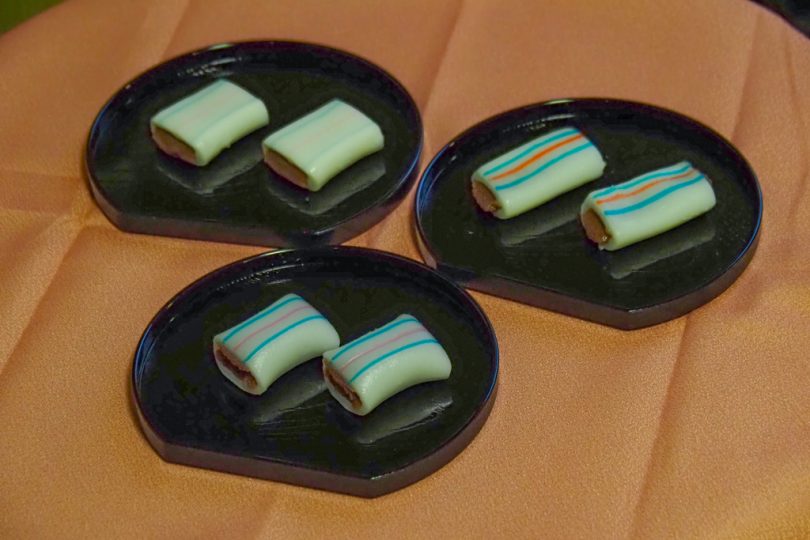
Along Seri River to Hikone City
From Taga-taisha-mae station, head toward Seri river. While riding along Seri river, we found a stone structure called “Nakagawara, the home of the Naumann elephant. This is because a fossil of a Naumann elephant was discovered on the riverbank of Seri river.
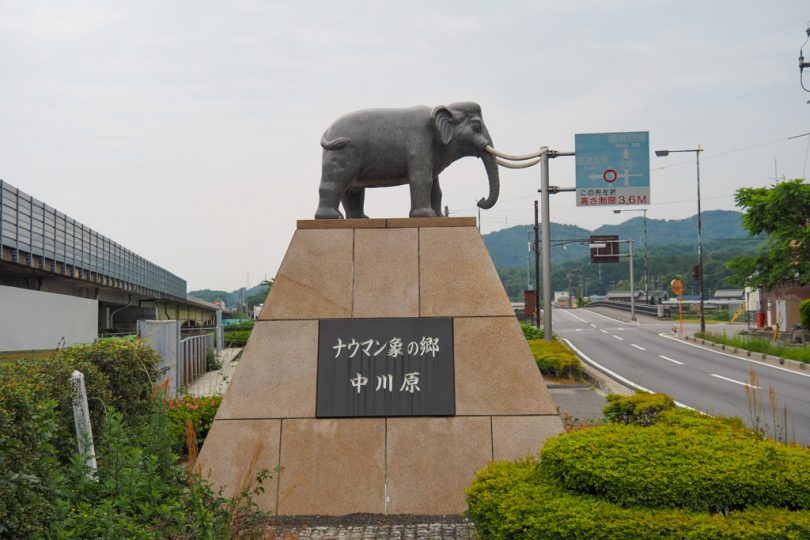
After passing National Route 8 and Tokaido Main Line, we ride along a narrow road called “Nanamagari no Butsudan Street.” This street is lined with stores that make butsudan (Buddhist altars), a traditional industry in Hikone, and is characterized by its inflected alleys.
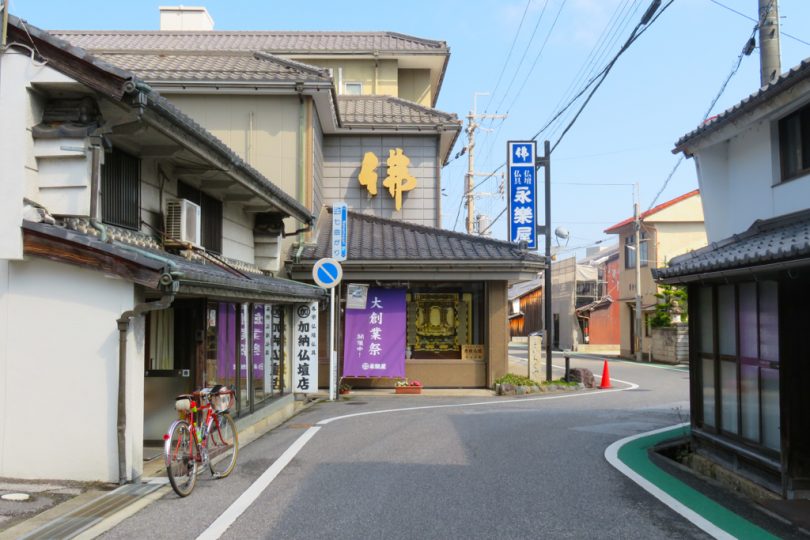
Passing through Nanamagari Butsudan Street, turn right at the T-junction and go to the station. In front of the station is a statue of “Ii Naomasa,” a warlord of the Warring States period and the first lord of the Takasaki domain in Ueno Province.
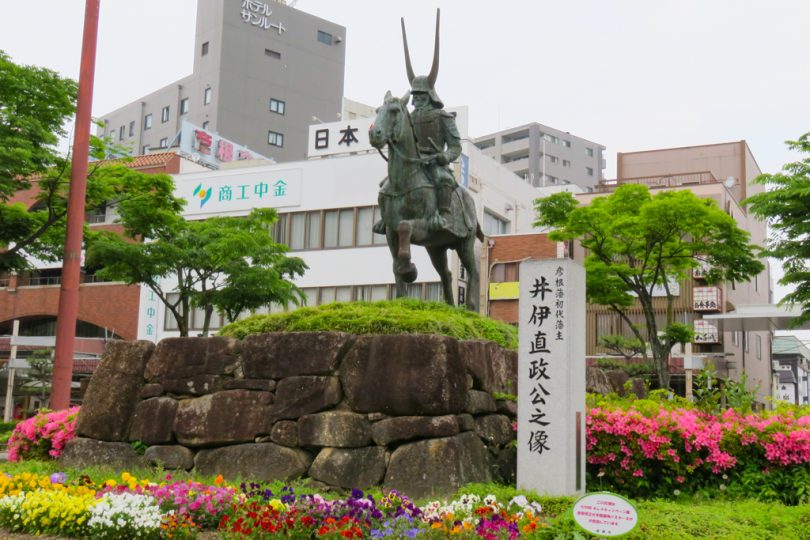
National Treasure! Hikone Castle
After circling around Hikone Castle, it is time to head inside Hikone Castle. Leave your bicycle at the bicycle parking lot, purchase a castle entrance ticket, and walk up the stone steps.
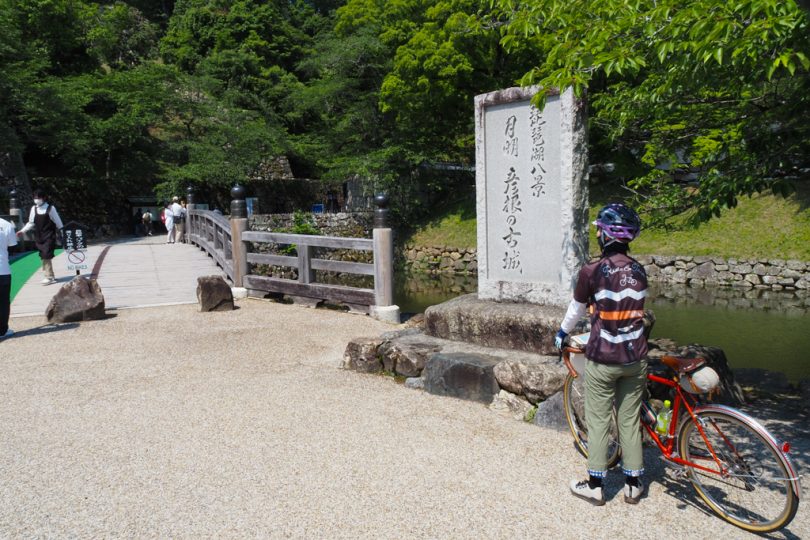
Of the 12 existing castle towers built before the Edo period and remaining to this day, five have been designated as National Treasures: Himeji Castle, Matsumoto Castle, Matsue Castle, Inuyama Castle, and Hikone Castle. These castles are called the “Five National Treasures.”
The construction of Hikone Castle was started by Naotsugu, a son of Ii Naomasa, one of the four Tokugawa kings, and took about 20 years to complete. Hikone Castle was spared from the danger of being abandoned, and visitors can feel what it must have looked like in the Edo period.
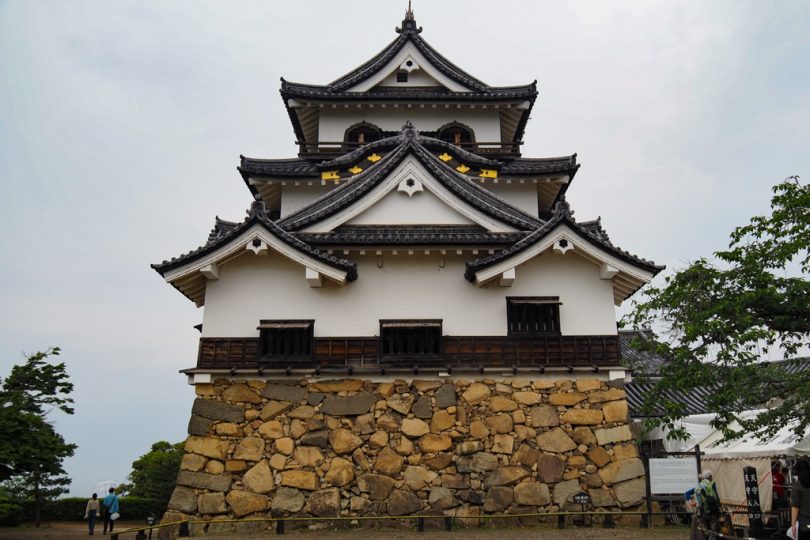
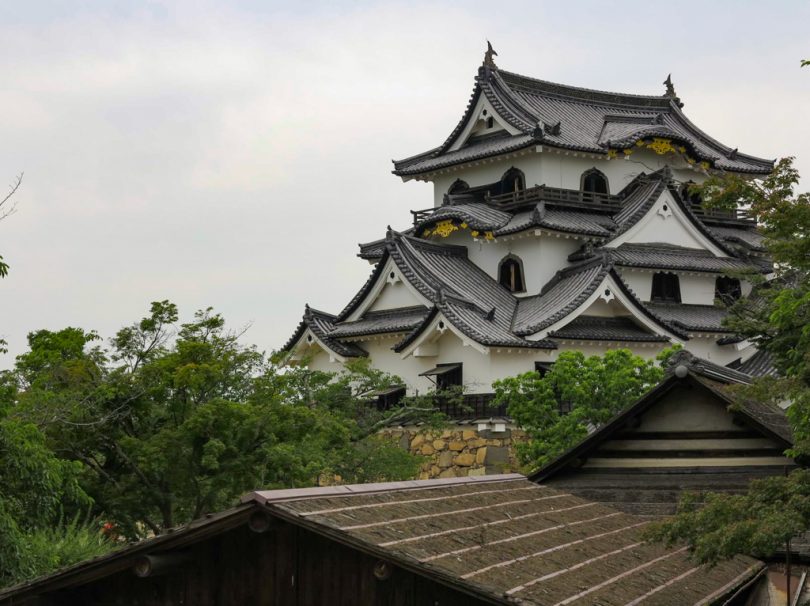
There are many steep stairs inside Hikone Castle, and you have to hold on to the handrails as you climb.
From the castle tower, you can see Lake Biwa over the city and wonder what the city used to look like. We wondered what the town must have looked like in the old days.
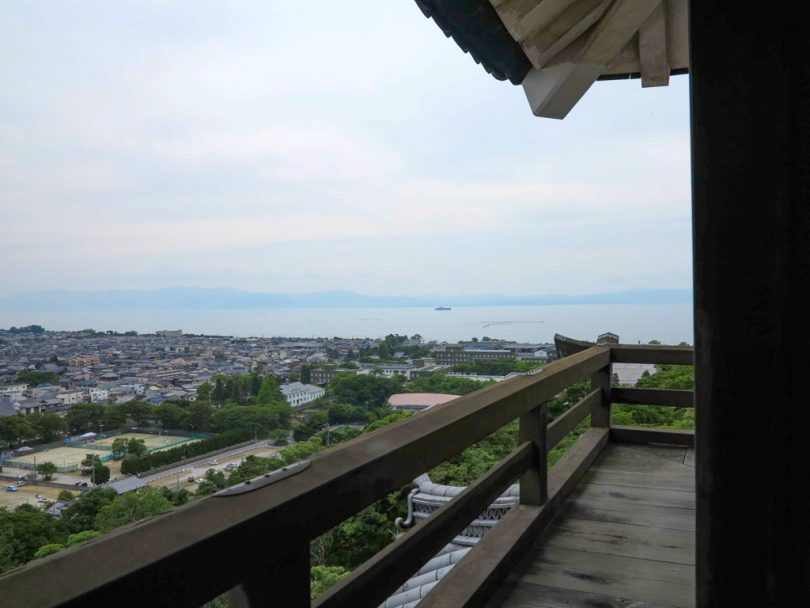
As we were walking toward the exit, an announcement came over the air, “Hikonyan will appear soon.”
We waited and enjoyed taking pictures of Hikonyan. Hikonyan was as popular as ever, and many people were gathered there.

Eating and drinking at Yume Kyobashi Castle Road
Head for Yume Kyobashi Castle Road, which retains the atmosphere of an Edo period castle town.
The 350-meter street is lined with souvenir shops, restaurants, and sweet shops.
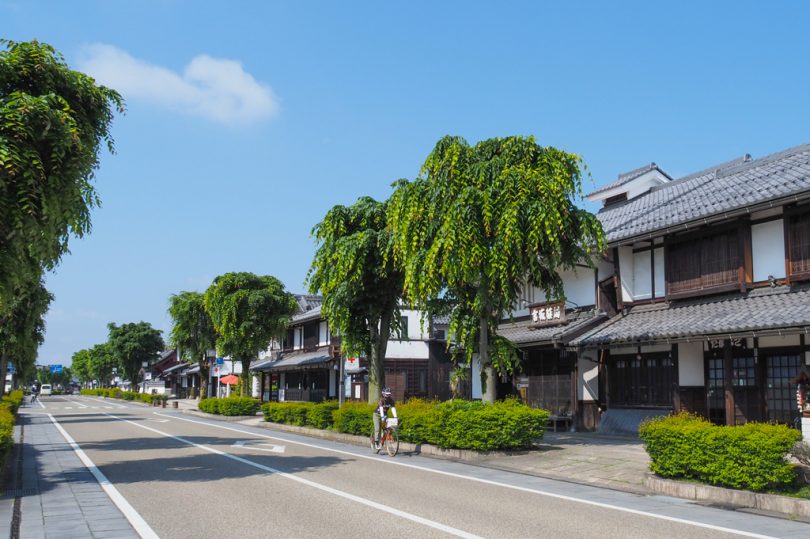
It was hot, so we had a bowl of “Mokomoko Genzaburo Soft-serve ice cream” at “Sabo Genzaburo” (Tea House Genzaburo).
The soft-serve ice cream made with two kinds of rich matcha green tea is delicious and you can really taste the tea flavor.
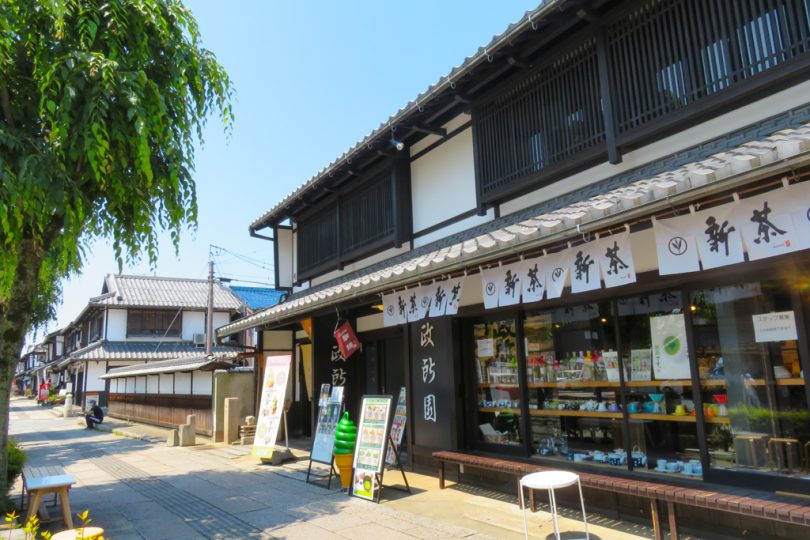
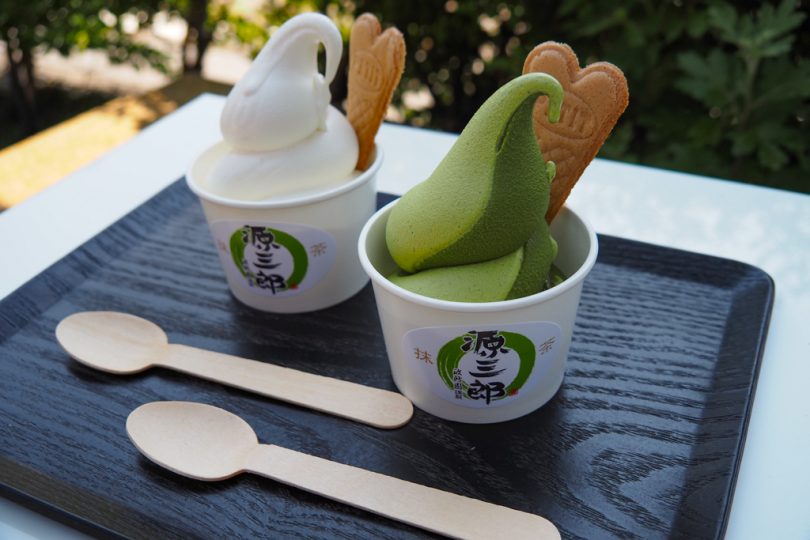
Hikone Domain Ashigaru Yashiki
Enter a narrow alley from Honmachi 1-chome intersection. You can see the houses where ashigaru (the foot soldiers) who guarded Hikone Castle in the Edo period lived.
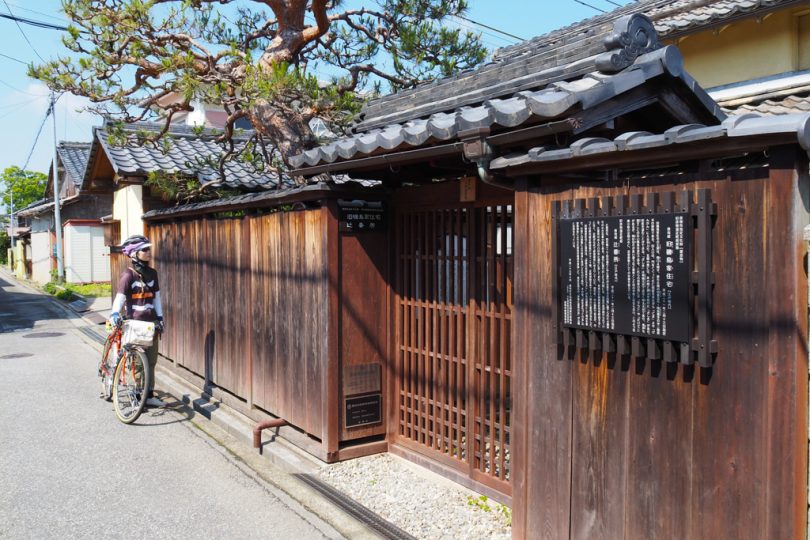
Ride along Seri River Keyaki (zelkova) Road to Lake Biwa. The path along the river is refreshing and pleasant.
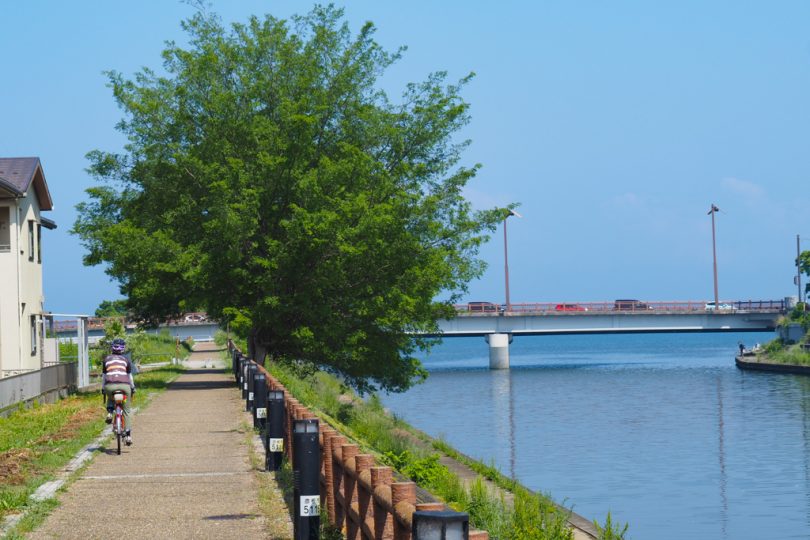
View from Lake Biwa
When you get to Lake Biwa, turn left at the T-junction.
Ride on Prefectural Road 25 for a while, and when you see the entrance to the lakeshore green area on your right, take the narrow road. You can see Take Island from Yasaka lakeshore green area.
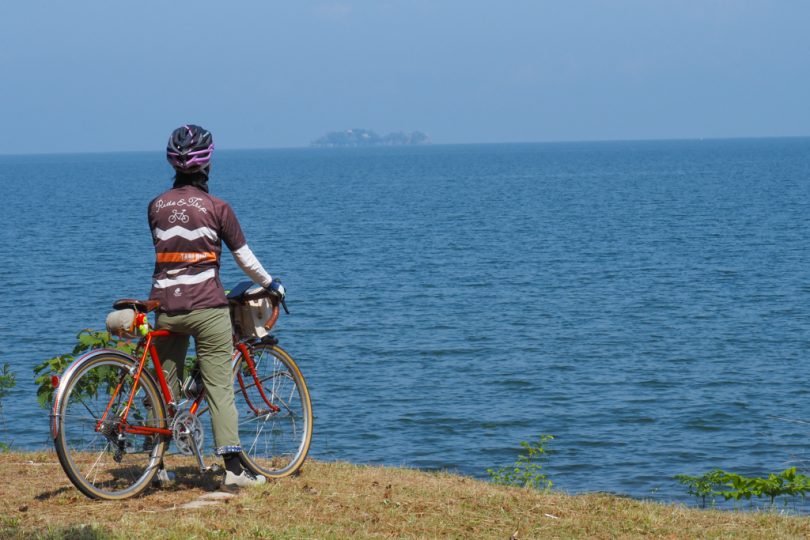
Takamiya-shuku, Nakasendo 64
Ride south along Inukami River, past the JR line, and turn left when you reach National Route 8. Turn left when you pass the JR line and ride around the old Nakasendo road to Takamiya-shuku.
Once on the old Nakasendo road, you will see old-fashioned houses and a calm atmosphere.
When you come to the torii gate of Takamiya Shrine on your right, you will see the “Ichino-torii (First Torii Gate) of Taga-taisha Shrine” next to the Takamiya Post Office. This is the entrance to the Omote-sando path leading to Taga-taisha Shrine, where we stopped during the first half of the course.
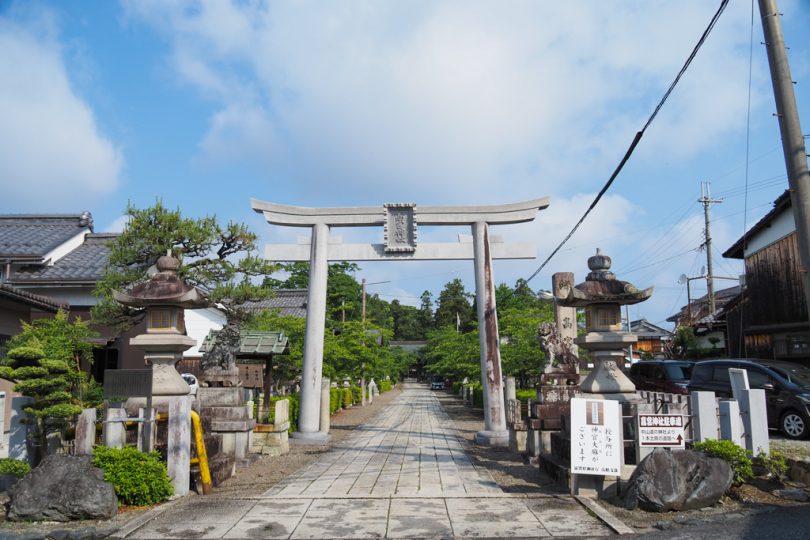
It is the largest and most magnificent ancient stone torii in the prefecture. In the old days, stone lanterns lined the 3-km path from this torii gate, which must have lifted the spirits of worshippers.
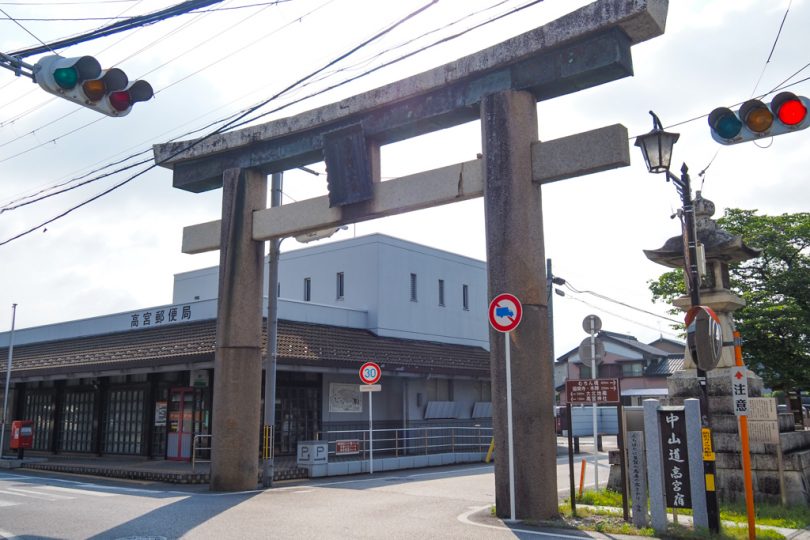
As one moves on from Ichino-torii, the number of old buildings increases, and the atmosphere of the inn town becomes even deeper.
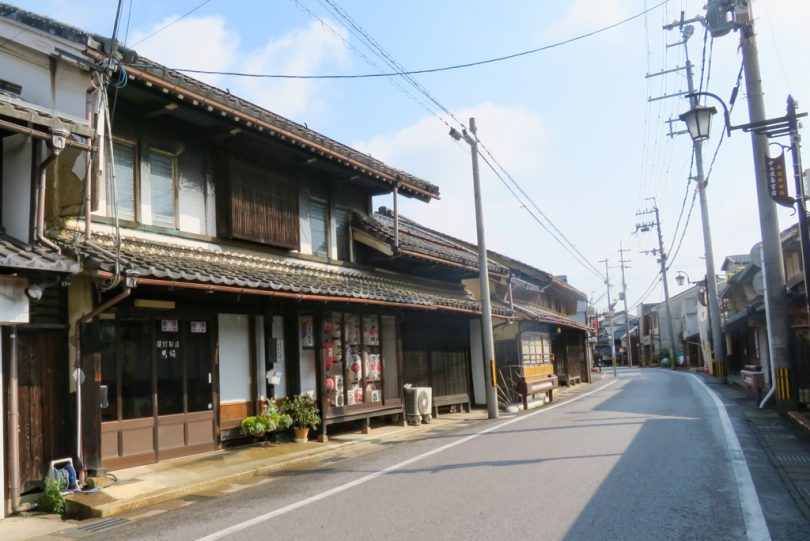
Non-paying bridge at Takamiya
When crossing Inukami River, one passes an old stone bridge.
The bridge was built in 1932, but it is said that it was originally constructed in 1832 by a wealthy man in Takamiya, who raised funds from influential people in the area.
At that time, there was a charge for crossing the river and for temporary bridges, but this bridge was called “Muchin-bashi” (non-paying bridge) because there was no charge for crossing. This must have been a blessing for the common people of the time!
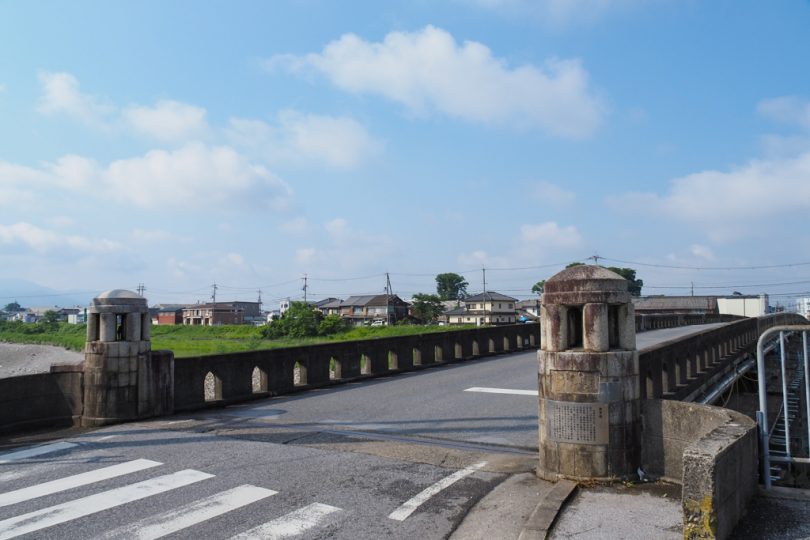
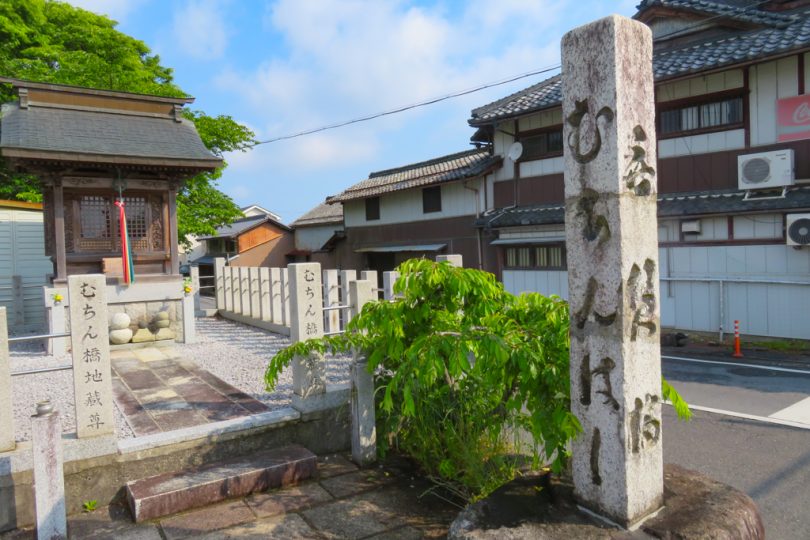
Statue of Takatora Todo in Takatora Park
Ride along Inukami River and when you see the “Inukami Ohashi Bridge” on your left, leave the river and take Prefectural Road No. 330.
Turn right at the crossroads where the Hikone City Fire Station is located, and you will arrive at Takatora Park, the last stopover point.
There is a statue of “Takatora Todo,” a warlord from Zaiji, Koura Town. He is said to have participated in the Battle of Sekigahara and made great achievements. He also excelled in castle-building techniques and is said to have contributed to the reconstruction of Edo Castle.
In the park, there is a stone with an interesting name “Zannen-ishi (regrettable stone)” that was not used in the reconstruction of Osaka Castle, so let’s look for it.
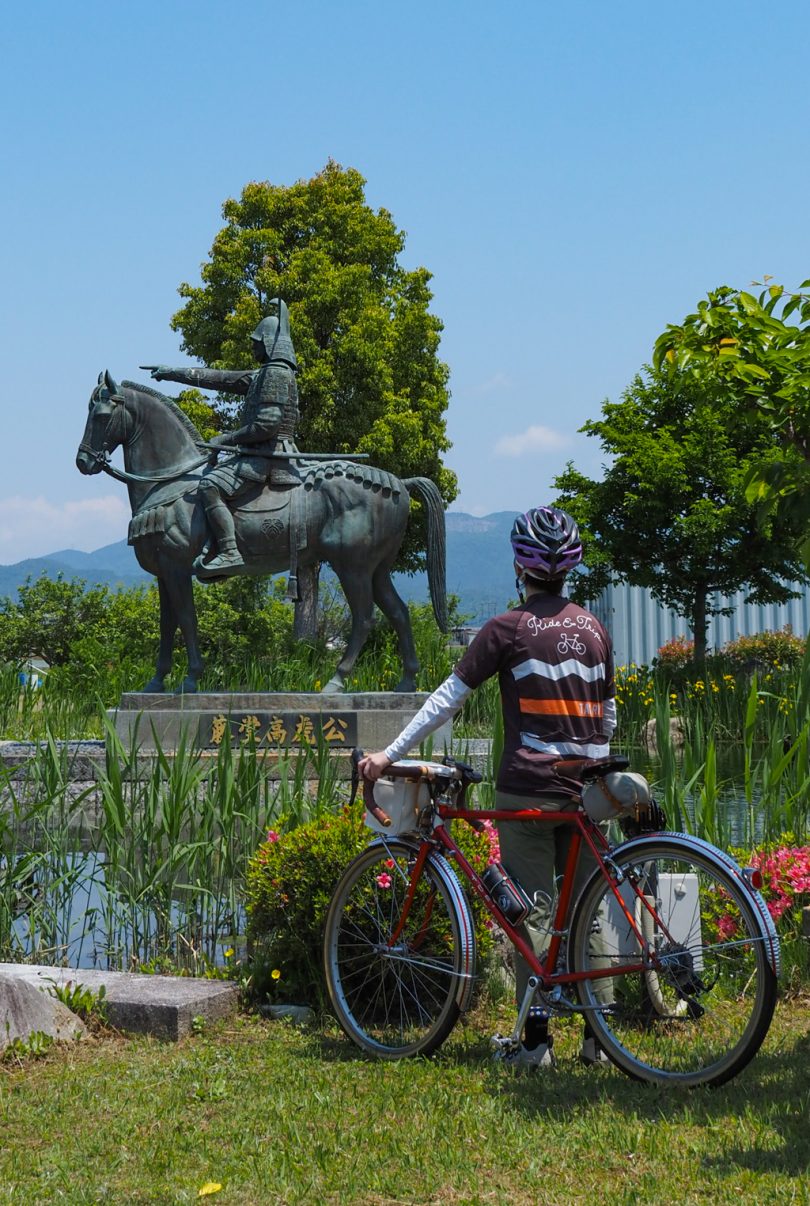
Incidentally, the photo of the statue of Takatora Todo was also the location featured on the cover of TABIRIN MAP: Koura Town and Surrounding Areas in Shiga.
Goal at Roadside Station Seseragi-no-Sato Koura
Returning to the roadside station, we ordered a pizza at Pizzeria Uno, a take-out stone oven pizza restaurant, and have it at a table in front of the direct sales counter.
The chef-owner of an Italian restaurant that operated for 10 years in Nihonbashi, Tokyo, moved to Shiga and opened the restaurant on the roadside station site in 2015.
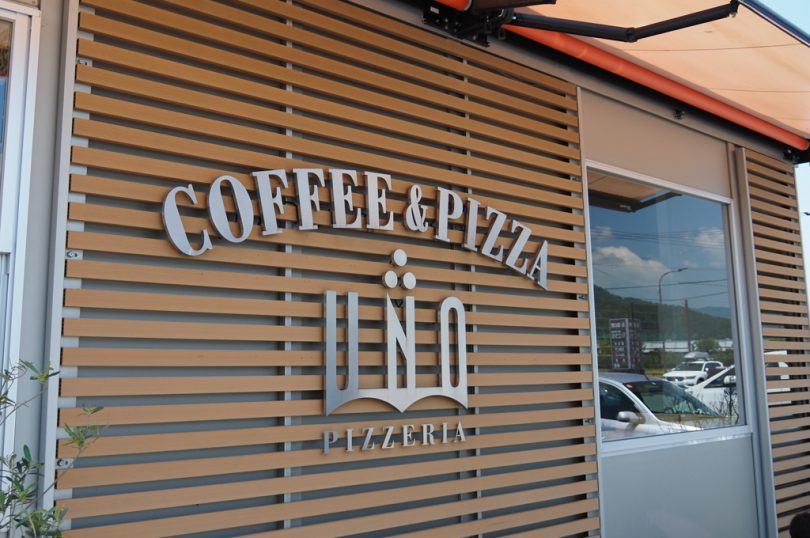
The local vegetable pizza is a light pizza made with fresh local vegetables. It is a delicious dish that will soak into your tired body after a long day of riding.
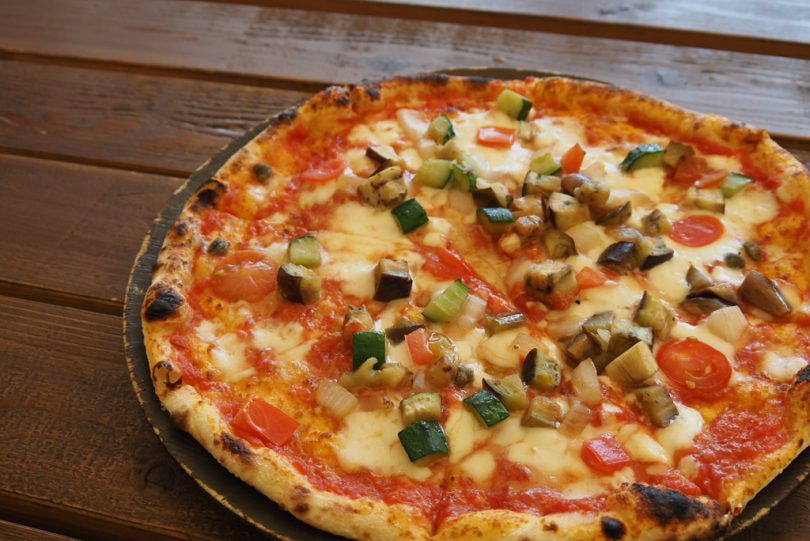
Course Introduction
TABIRIN MAP Around Koura Town, Shiga (Koto/Hikone/Higashi-ohmi Area)
Summary
We rode “Hikone Pottering,” course from TABIRIN MAP, the shortest of the four routes around Koura Town. It is a rich route that takes you to the historical Taga Taisha Shrine, Hikone Castle, and the old Nakasendo inn towns within a short distance.


